A Map of the History of the Electric Grid
The pioneers who spearheaded the systems that make up the modern electric grid, such as Thomas Edison and his centralized power plants and Nikola Tesla and his alternating-current generators, led to a period of economic growth and human prosperity unmatched in history. All of this is a testament to the powers of capitalism and the free market, which is a fact shared often by the brilliant economists at the Center of the American Experiment.
Here, I want to touch briefly on the historical achievement of the American electricity grid, which is now taken for granted even while we continue to benefit from it, by going over the hand-drawn map I made of the grid.
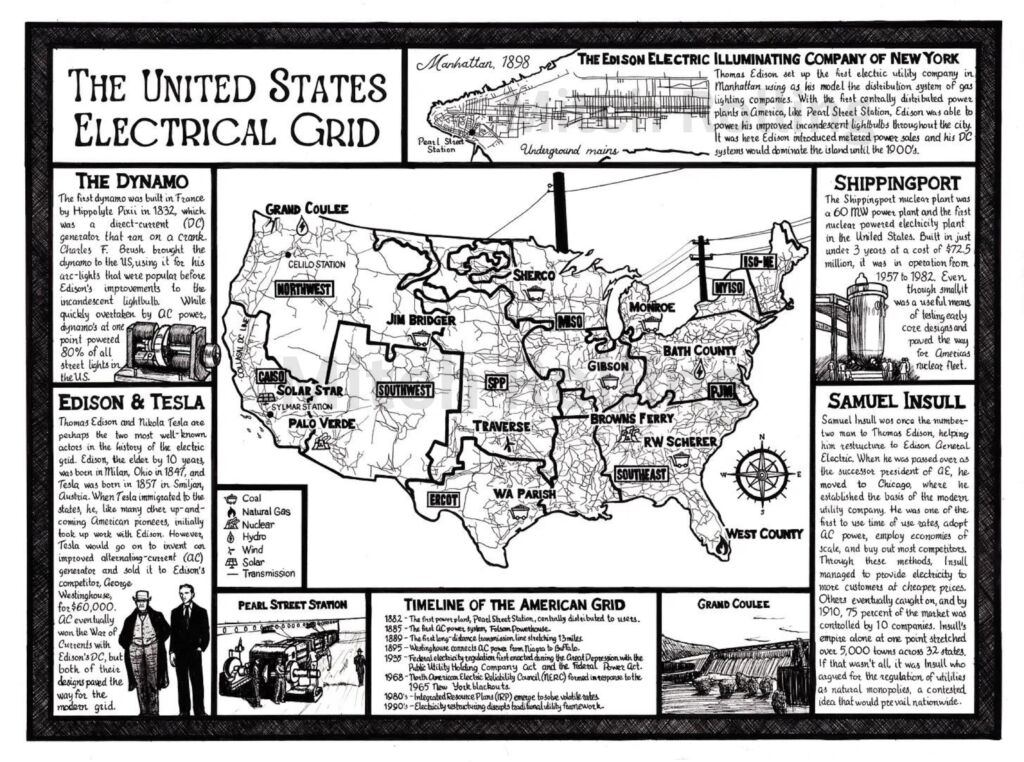
Before electricity, when humans depended on favorable weather conditions for almost everything and when the sun, wood, wind, and horses acted as mankind’s most abundant energy sources, there were constant famines, food shortages, and other events that would be considered horrors today but were often unavoidable given the circumstances.
Today, we are the beneficiaries of one of the largest machines in the world – one that has freed much of humanity from the whims of Mother Nature and supplied every household with time-saving appliances for tasks that, in past times, would’ve only been possible with a team of servants.
I drew this map because I wanted something to look at that would remind me how great of an achievement our electrical system is and how important it is not to destroy it with ineffective, inefficient policies that would have us revert to the past and become over-reliant on the weather once again.
The Transmission System and Power Plants
When you see the electricity grid in its entirety, you can’t help but think, “How did we build this?” On the map, I included every transmission line in the country over 115 kV and several of the largest power plants in the country — such as Grand Coulee, Palo Verde, etc. — in each region and for each electricity source.
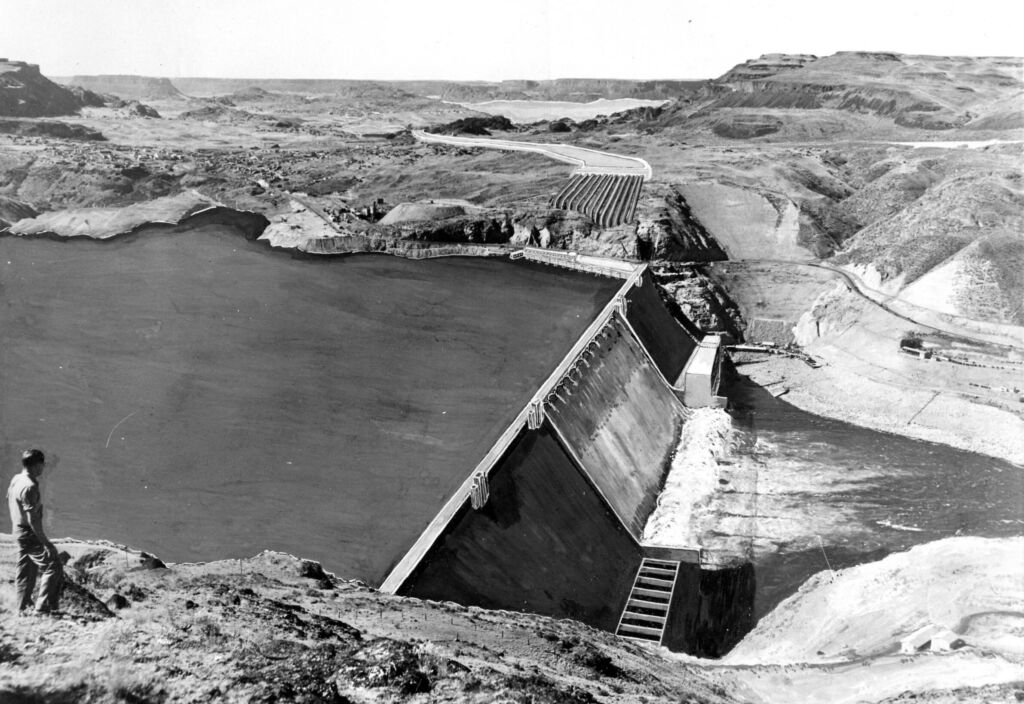
Looking west over the Grand Coulee hydroelectric power facility. Photographer: William S. Russell. Circa 1947
I added the Sherburne County (Sherco) coal-fired power plant in Minnesota because, in addition to being one of the largest power plants in the Midwest, it’s the facility Isaac and I have been defending in our work since day one. Despite numerous NERC reports stressing the need for dispatchable capacity in MISO for reliability concerns, grid planners in Minnesota and at Xcel Energy have continued with plans to shut down the Sherco coal units years before their original retirement date, replacing them with intermittent wind and solar energy.
Originally, the map had no wind or solar plants because they are so much smaller compared to baseload and dispatchable sources. However, while I don’t prefer them, I couldn’t bring myself to ignore them completely. I ended up including the largest facilities of each resource — Solar Star in California and Traverse Wind in Oklahoma.
The Dynamo
The dynamo was one of the first electricity generators in the world and ran on direct current (DC).
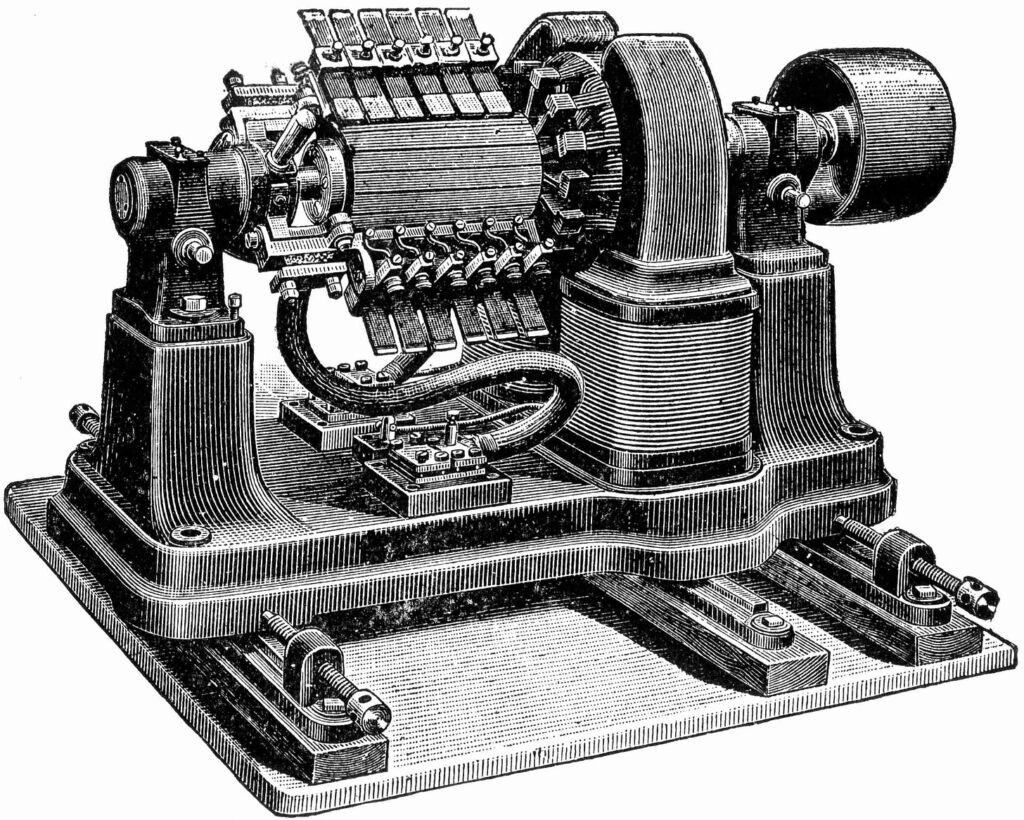
Ironically, it was during the making of the dynamo that alternating-current (AC) was discovered by Michael Faraday, but because he was unsure of how to deal with the larger power he simply developed a way to work around it.
Dynamos were enhanced by the work of Hippolyte Pixii in France for use in power systems and were brought to the United States by Charles F. Brush in the late 1800s to power his arc lamps. While the dynamo would soon become outdated, at one point they powered 80 percent of all streetlamps in America, cementing its importance in the history of the electricity grid.
Brush’s dynamos were small, however, and weren’t centralized — meaning they couldn’t power multiple users at once. Thomas Edison changed this by utilizing the technology of the dynamo to build his much larger power stations, which became the first centralized power plants in world history.
Edison Electric Illuminating Light Company
The Edison Electric Illuminating Light Company brought the first centralized electrical grid in the world to America.
Pearl Street Station was the first power plant in downtown Manhattan. At the time, it was the largest dynamo generator that had ever been built and used coal as its primary fuel source. Other energy sources were available — such as hydro and even wind — but coal was chosen because it was more readily available for constant use and inexpensive (lessons we are relearning today).
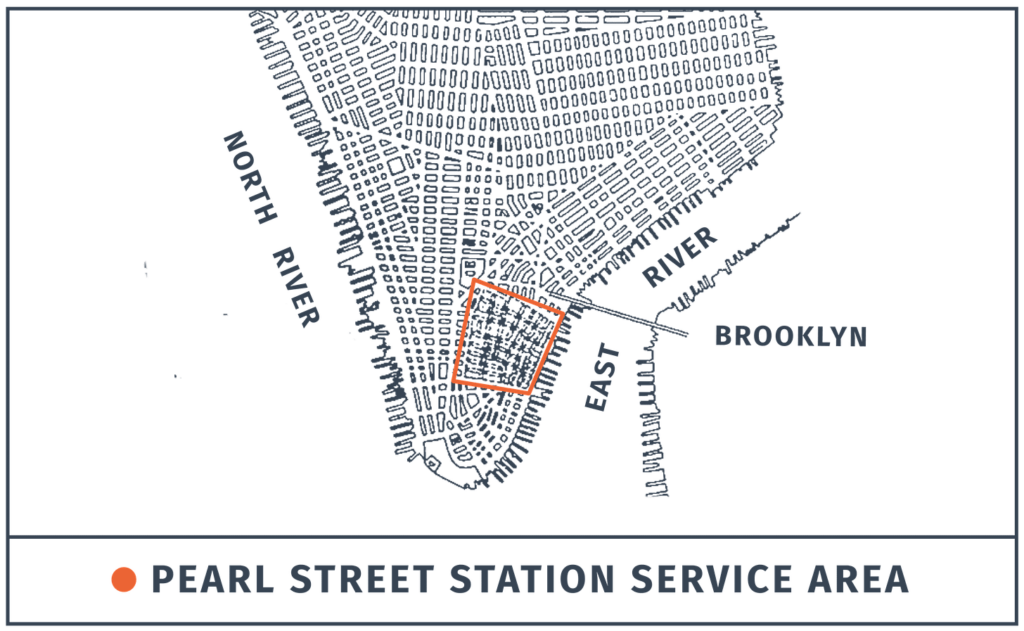
Image: Photographic Services of the Consolidated Edison Company of New York, Inc.
While Edison would lose the War of Currents, his work at Edison Electric was instrumental in establishing the framework of electricity service, which he based on the gas distribution systems that were already in existence at the time.
After Edison introduced Pearl Street to the U.S., over 1,000 power plants popped up across the nation attempting to mimic its success. Needless to say, Edison revolutionized America and the world with his innovations in the electric industry.
The War of Currents
The War of Currents is one of the more consequential events in the history of the electric grid. Thomas Edison’s direct-current (DC) systems were pitted against those of George Westinghouse, which utilized alternating-current (AC) systems that were brought to America by Nikola Tesla. The ascendancy of AC power was likely inevitable, as it was inherently better at powering users over longer distances.
Tesla originally found work in the United States at Edison Machine Works after being brought in from the Continental Edison Company in Paris. Tesla is among the many American pioneers who first found employment through one of Edison’s companies. In Paris, Tesla’s work involved installing incandescent lighting systems, which allowed him to gain valuable experience as an electrical engineer.
This experience would serve Tesla well in America. After his AC-power systems were declined by the Edison company, which feared losing royalties from its DC systems, Tesla left the company, created an AC-powered generator, and sold the rights to his patent to George Westinghouse for $60,000 — or over $2 million today.
In time, there was a full-blown competition for the future of the power grid between Edison’s DC-powered generators and Westinghouse’s AC. This competition led to controversial accusations and demonstrations by Edison, who attempted to paint AC power as dangerous. Several dozen animals (mostly stray dogs) paid the price for this fruitless endeavor, as AC power would eventually win the day.
Shippingport
I didn’t start my career as a nuclear advocate, but the (insane) nature of the industry nudged me into the fringes of the category. Over time, though, I’ve grown to respect the history of nuclear and the capabilities of the technology going forward. If any technology can lead to an electrical grid with substantially lower emissions, it’s nuclear energy.
It’s for that reason I decided to showcase the first nuclear plant in the country, Shippingport — built as part of President Eisenhower’s Atoms for Peace program — on the map.
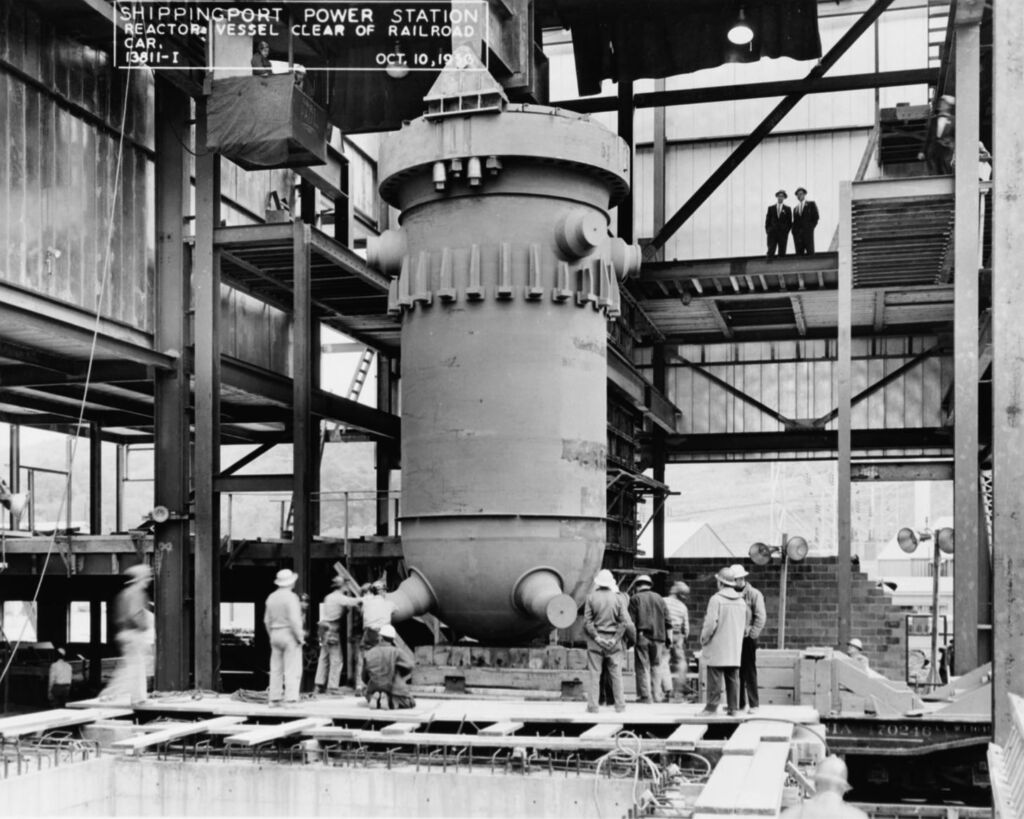
It wasn’t the largest nuclear power plant of its time, but it was the most instrumental in the growth of nuclear power in the U.S. As Duke Energy explains:
Shippingport broadened opportunities for atomic research and paved the way for new nuclear plant construction. Forty-six nuclear reactors were commissioned around the country in the 1980s alone. By the time of Shippingport’s decommissioning in 1989, 109 nuclear reactors were generating about 19 percent of the nation’s electricity, becoming the second-largest power source in the U.S., with coal still the frontrunner.
For lovers of American history, the golden era of nuclear generation in the U.S. showcases how innovative we can be as a nation if our policies allow our creative energies to be unleashed. Unfortunately, energy policy in the U.S. has led to crushing regulations in the nuclear industry that have effectively drowned out any possibility of future widespread adoption of nuclear power.
However, nuclear innovation continued long after America ceased much of its nuclear buildout. Without any new net capacity additions since 1990, upgrades and advancements in nuclear power have allowed nuclear generation growth to outpace that of wind and solar combined until very recently, despite the building of over 160,000 MW of renewables.
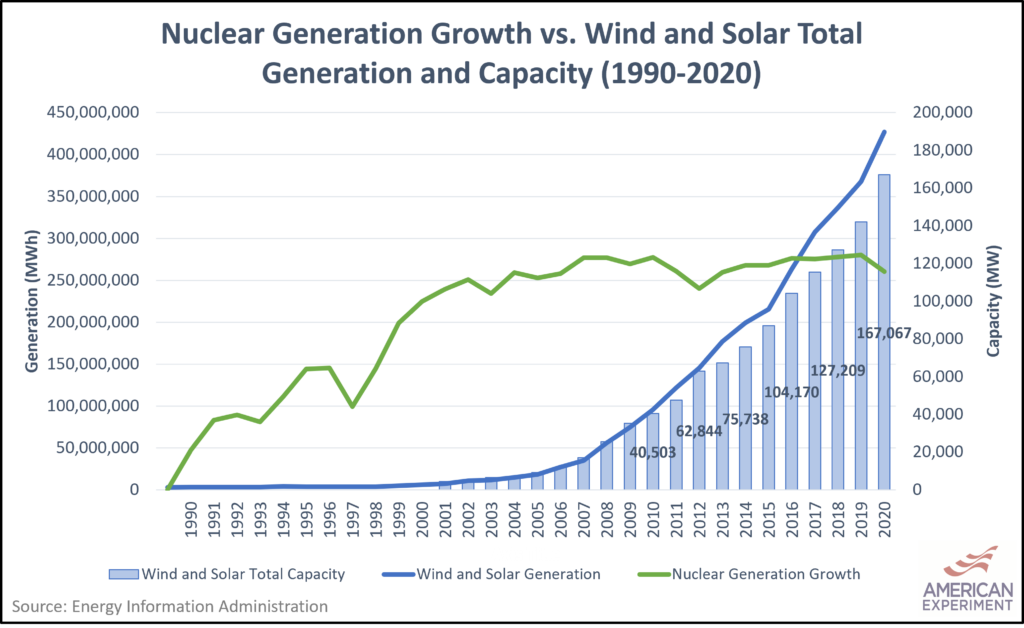
Samuel Insull
I included Samuel Insull because, more than anyone else, he is responsible for the existence of the modern regulated utility company.
Similar to Tesla, Insull also found employment with Edison early in his career. However, he felt he had been passed over for a promotion, so he left for Chicago to start his own company – which ended up becoming the largest utility empire in the country spanning 5,000 towns and 32 states.
His innovations transformed the grid, from employing time-of-use rates, adopting AC power nationwide, employing economies of scale, establishing monopoly control through buying out competitors, and arguing for the regulation of utility companies as natural monopolies.
While a pioneer of the modern grid, Insull’s empire collapsed during the Great Depression, and he died broke in Europe, living off the pension from his former companies.
The United States Electrical Grid
There you have it. This goes over everything I included in my hand-drawn map of the United States electrical grid, which represents just a tiny portion of the historical achievements that went into producing it.
The map also includes drawings of the things described above, like Edison and Tesla, the dynamo, the Shippingport nuclear facility, Pearl Street Station, and Grand Coulee.
My original intention was to have a visual representation of these achievements for myself, but I hope that, like me, it can bring others closer to an appreciation of how amazing the electrical system is and why we should fight to keep it around and functional.